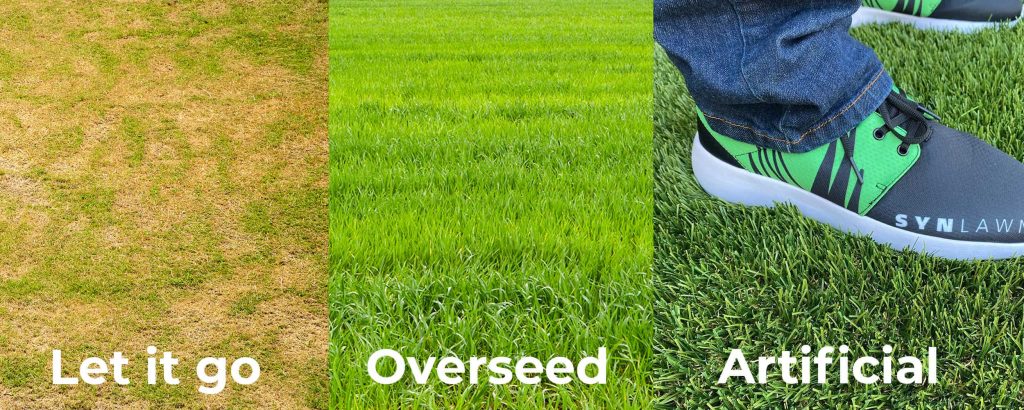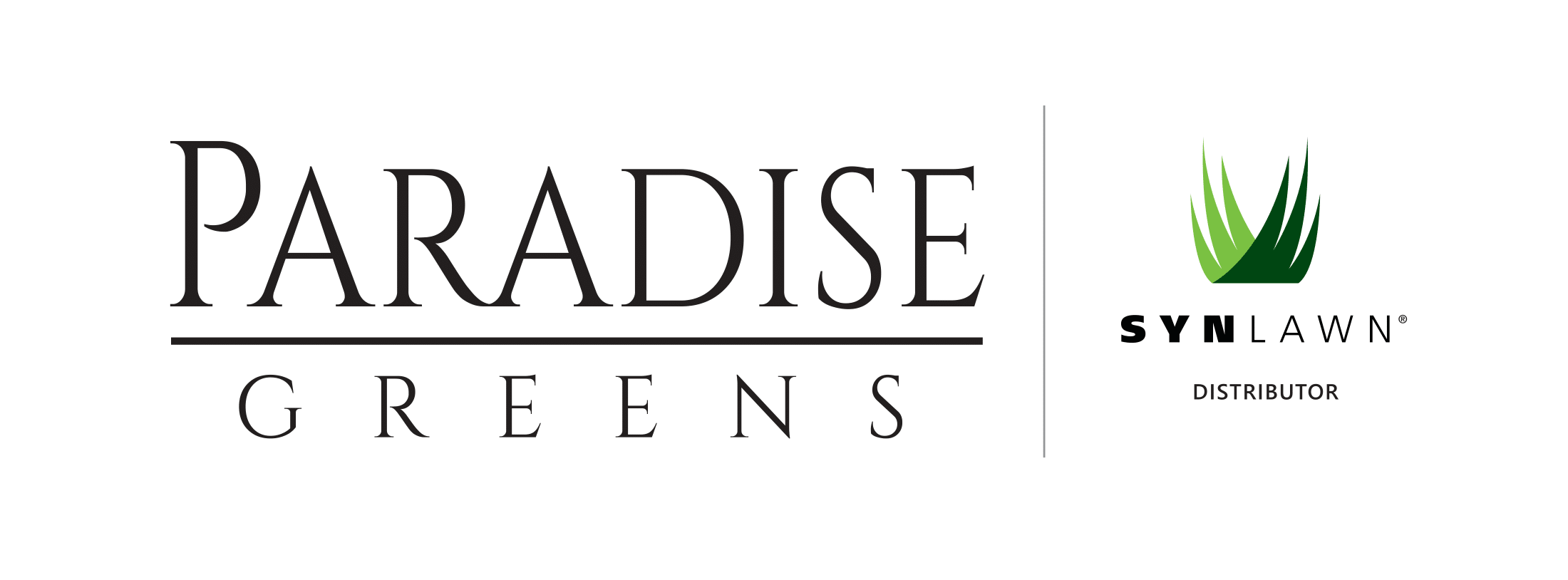
Winter is coming, and that means if your lawn is sod / natural grass, you’ll have a choice to make: overseed or accept a patchy, desolate looking lawn for the rest of the season. Of course, there’s also a third option: choose artificial grass and skip worrying about overseeding at all.
What is Overseeding?
If you’ve never heard of it, then overseeding is the practice of planting grass seed on top of your existing lawn to prevent brown patches and ensure a lush green lawn year-round. There are a lot of things to keep in mind when overseeding.
Overseeding is typically done with ryegrass, which performs better in cooler temperatures and typically dies out in warmer temperatures. Both annual or perennial ryegrass can be used. Perennial ryegrass is typically considered the more attractive of the two but can create competition with your permanent lawn when it comes back.
Many lawn experts don’t recommend overseeding unless your lawn is Bermuda grass. Zoysia grass, St. Augustine, and centipede grasses can be damaged by the overseeding process, so it’s important to keep in mind.
When to Overseed
Overseeding needs to be done at a specific time of year – when it’s still warm enough for seed to take root but not too warm for rye grass to succumb to disease – typically 50 F at night and no hotter than 70 F during the day is the perfect temperature range.
You’ll also need to prepare your lawn. Water needs of grass increase in the fall, but be careful not to overwater. After ryegrass is sown, it’s recommended to water 2-3 times per day until the grass takes hold.
In the spring, if the weather is cool, ryegrass can hang around and prevent your summer lawn from coming back. In order to prevent this, you’ll need to fertilize early to give your permanent lawn the nutrients it needs to come back.
Artificial Grass as an Alternative
If all this sounds like a lot, that’s because it is! Overseeding is a lot of work just to get a green lawn in the winter. It’s not necessary, but if that’s a look you want, that’s what’s required to get a green lawn year-round.
But there’s an easy alternative – artificial grass. An artificial lawn is the easiest way to get a green lawn year-round without the hassle over overseeding. Take a look at our gallery for tons of examples or visit us on facebook for our installation of the day.
